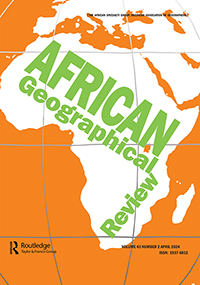
WALTHER – The impact of transport policies on road accessibility in Ghana
Susanna Goewey, Olivier J. Walther, Paul Nugent
Article first published online: 01 February 2024
DOI: https://doi.org/10.1080/19376812.2024.2309385
ABSTRACT: This article examines the impact of transport policies on road accessibility in Ghana. To measure accessibility gains, the article applies a model that compares the area and population that can be reached in under four hours by road from any city in 2010 and 2019. By quantifying travel times required to reach the nearest city ten years apart, we measure whether road improvement projects have led to improving accessibility and in which regions of Ghana. The model suggests that regional disparities tend to grow as Ghana becomes increasingly urbanized. While major accessibility gains have been observed in the last decade, southern regions and cities have benefited more from the improvement and development of the road infrastructure than the rest of the country. Accessibility gains are particularly important in the southwestern part of Ghana, where mining, agriculture, and urbanization are fueled by new feeder roads in previously forested areas. By comparison, accessibility remains poor in the north of the country. The persistence of regional disparities is reinforced by the general distribution of the population in Ghana and the spatial structure of the urban network.
Read the full publication in African Geographical Review.